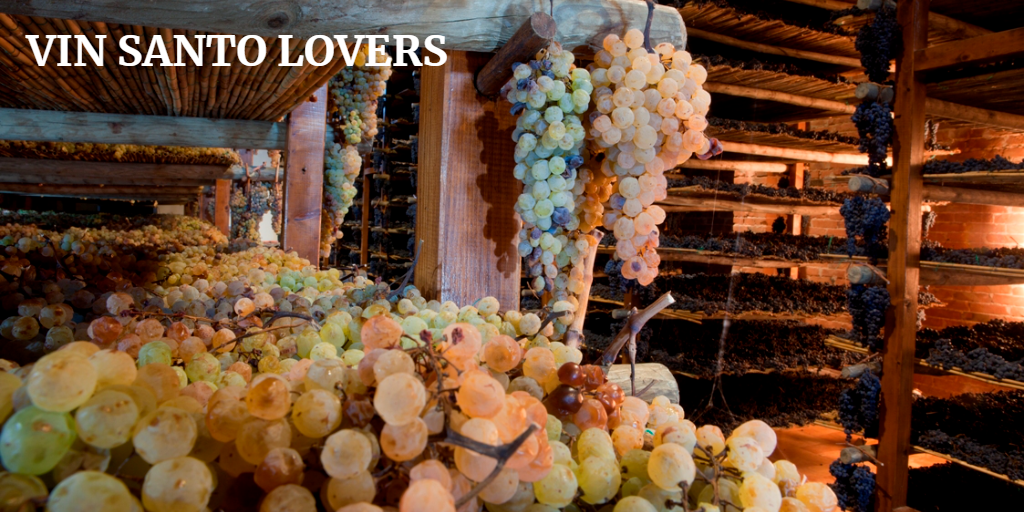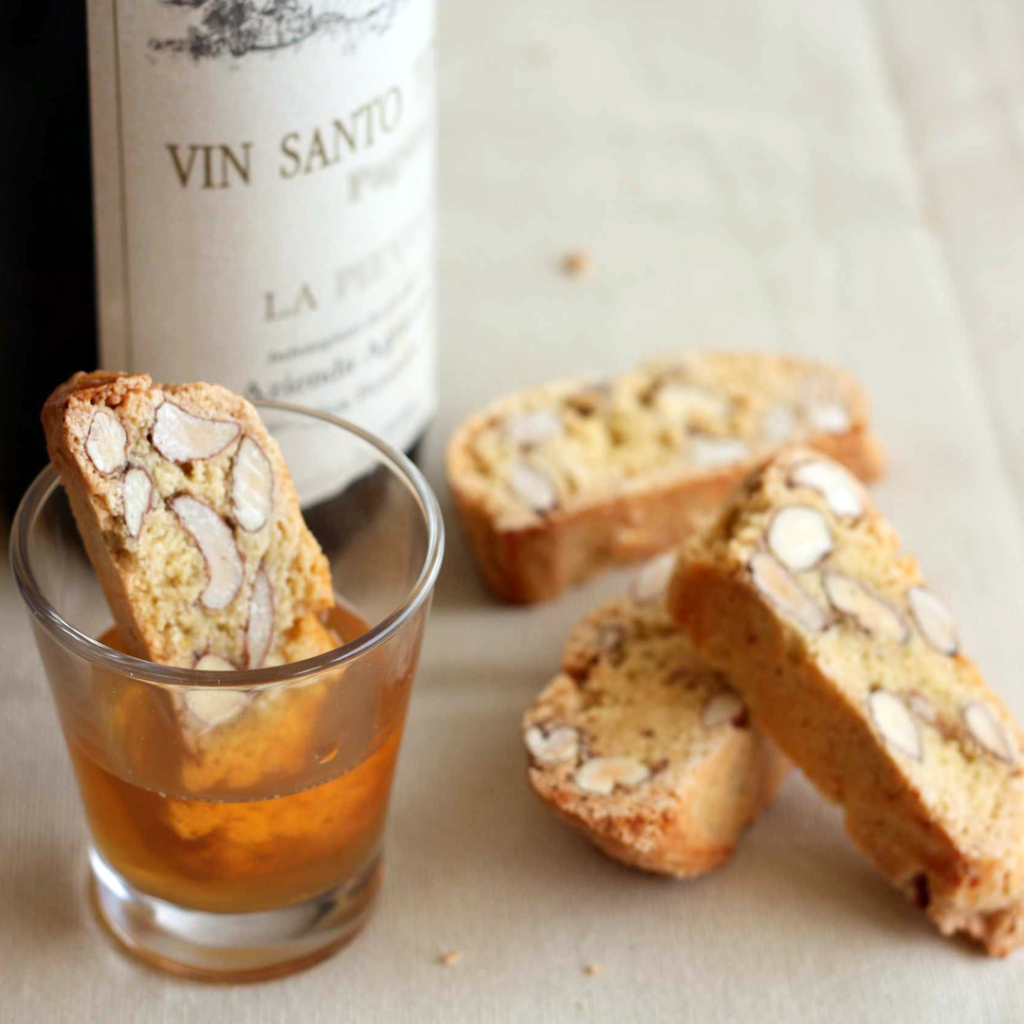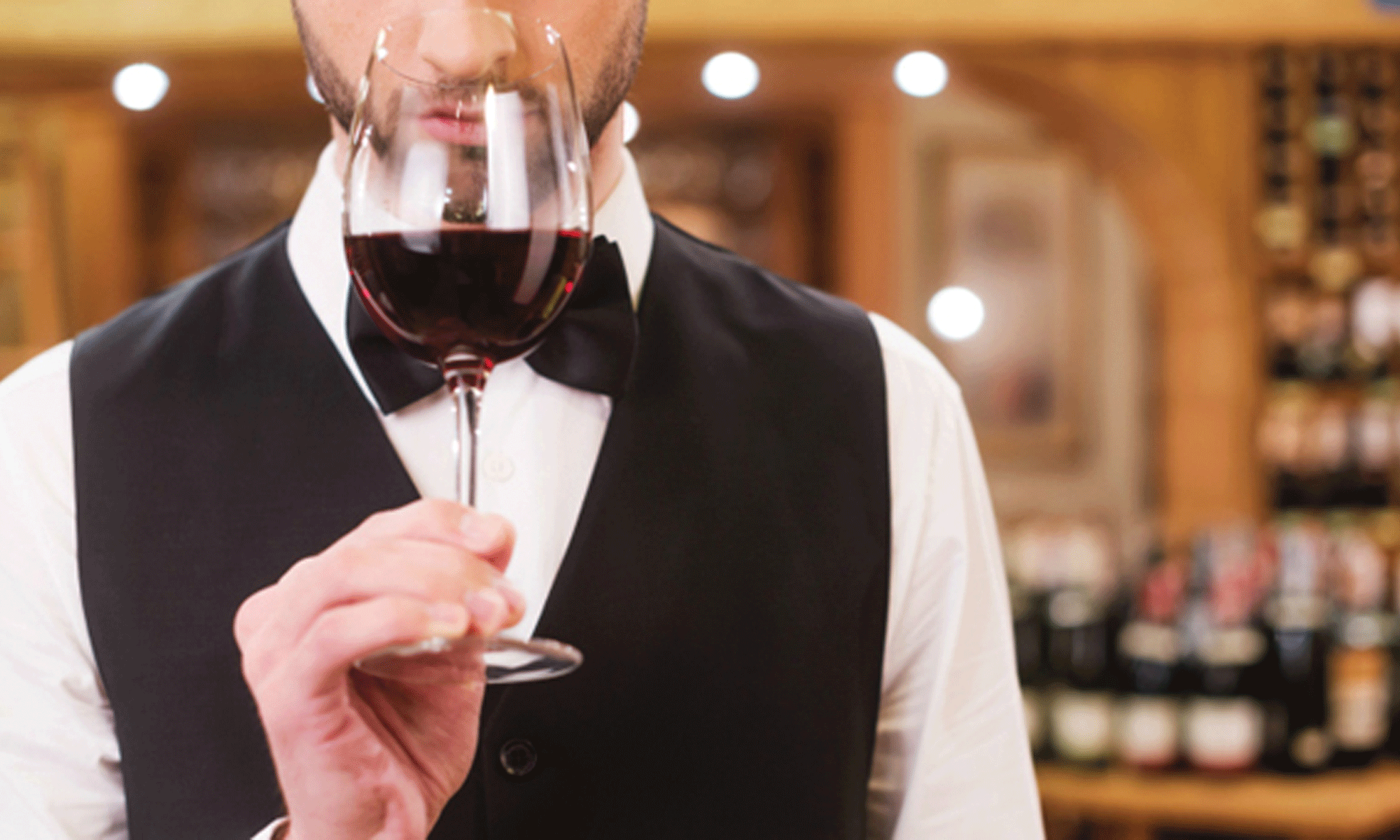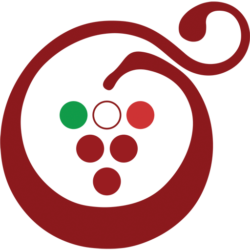
Montepulciano (Italy), February 26th 2022 – “VIN SANTO LOVERS”: the very first event dedicated exclusively to Vin Santo. At the fortress of Montepulciano, organized by the Consortium of Vino Nobile di Montepulciano, a round-table committed to educating about this nectar, followed by a walk-around tasting where the best Vin Santo bottles are available, as old as 1969.
An event to raise awareness of Vin Santo, much appreciated by connoisseurs but generally underestimated as the sweet wine to dip cantuccini biscuits in. Instead, it is one of the best straw wines (made out of dried grapes) in the world, in which wineries need to invest a lot but until now has not received the recognition it deserves.
The event started with a round-table where historians, oenologists, professors, wine tasters and journalists discussed this precious golden liquid.
- Prof. Marco Montori, Vin Santo history
- Prof. Andrea Mazzoni, Vin Santo production techniques
- Prof. Fabio Mencarelli, Vin Santo grapes drying techniques
- Ms. Carlotta Salvini, FISAR Best Sommelier 2019
- Mr. Roberto Fanticelli, founder of the Maledetto Toscano Cigar Club
- Prof. Stefano Ciatti, President of Health and Conscious Drinking
A tasting of the best Tuscany Vin Santo labels, as special as from a 1969 bottle., has followed. The famous San Gimignano ice cream maker and Ambassador of Made in Italy, Mr. Sergio Dondoli, for the special occasion introduced his Vin Santo flavoured ice cream.
Briefly the history of wine.
More often we hear about admirable archaeological discoveries on the oldest wine: the latest dates it to 6100 BC, placing its “invention” in Georgia. Certainly, the wine is even older than this date.
There is a substantial difference between Palaeolithic wine (from about 2.5 million to 10,000 years ago) and Neolithic wine (from about 8,500 to 4000 BC). In the Palaeolithic age for the first-time man and vine met (Eurasian wild vine, Vitis vinifera subspecies Sylvestris, ancestor of the domestic species), this phase is characterized by a causal production of wine, linked to limited availability and seasonal harvest. In the Neolithic age we witness the birth of agriculture and therefore also the domestication of the vine, it is in this second phase that happened the necessary conditions for the invention of viticulture and the intentional production of wine.
Patrick McGovern book, “Ancient Wine: The Search for the Origins of Viniculture”, is one the most authoritative scientific introduction to the study of wine. Archaeology, in fact, together with geology, archaeobotanical, molecular chemistry, are able to provide us with useful tools to investigate the beginnings of viticulture, sometimes forgotten by wine historians who often entrust their study on literature sources and ancient text alone.
It is a journey through time and ancient cultures traced from the expansion of the domesticated vine, which developed throughout the Bronze and Iron Age up to the affirmation of the cultures of the Greeks and Romans.
In the year 64 AD, the Roman emperor Nero estimated that 140 types of wines were produced in his empire.
If the Roman Empire has the merit of having spread the vine in continental and Atlantic Europe – maybe its highest point – another emperor, Domitian, due to an excess of wine produced in the occupied territories and a wheat famine, was responsible for the first law restricting the cultivation of vines outside the borders of Italy.
This was only the beginning of the great crisis of Roman agriculture and viticulture that from the second century AD C. will worsen until the collapse of the Western Roman Empire.
The crisis of viticulture becomes unstoppable when the small property is replaced by the absentee large estate owners.
The phenomenon became particularly serious during the third and fourth centuries. due to the progressive depopulation of the countryside to which the barbarian wars and plagues contributed.
The numerous testimonies of the Ostrogoth age that can be obtained from the letters of Cassiodorus and Lombard from the edict of Rotari of 643 indicate the medieval vineyard closed by orchards and clauses, often within the city walls.
The rebirth of medieval viticulture coincides with the expansion of Christianity and with the new symbolism that linked wine to the sacrifice of the Mass.
In this period, the expansion of viticulture towards northern Europe, as far as England, is singular, both for religious reasons and for the occurrence of a favorable climatic phase. This generalized diffusion corresponds to a progressive shrinkage of the vine in the Mediterranean areas where the religion of Islam was expanding.
Viticulture returned to be an important economic activity in the Carolingian age, during which the vine, as well as being once again cultivated in the open countryside, became the protagonist of the numerous deforestation and reclamation works carried out by monastic orders, Benedictine in the first place.
The diffusion of the Benedictine rule in the 10th century. with the establishment of new relationships between property and farmers, it favored the spread of viticulture, which went from a ratio of 1 to 1 between vines and trees in 950 to 3 to 1 in 1,100.
From a convivial role enjoed by Greek and Romans to a religious drive in the Middle Ages wine changed its purpose. It is impossible not to see how much the history of wine is intertwined with human culture, accompanying it to this day.
Agriculture gives rise to social stratification and with this the classes that rise to power, thanks to resources and free time. Wine consumption takes on a convivial purpose, an element that distinguishes the lifestyle, in some cases accompanies them from cradle to grave [1].
Wine needed containers to be transported, served and drunk, of course made of materials in line with technological evolution at that time. On these vessels McGovern focuses his attention during his research, age after age and culture after culture. Thanks to the study of the residues present in ancient jars, it is possible to establish whether a container contained ancient wine or not: presence of tartaric acid or its salts, if there has been fermentation, intentional attempts to eliminate oxygen infiltrations, additions of tree resins.
Vine and wine accompany the cultural evolution of man and society. To understand why wine has always distinguished itself obtaining a renowned status, we need to get to the origins of this relationship: this has been the easier and faster way to obtain – in the West – ethyl alcohol, the most effective drug of all time.
An analgesic, a disinfectant, a healing solution, in addition to providing natural compounds (endorphins) with pleasant effects on the brain: this is wine. So we understand its strong function as a social lubricant that facilitates relationships with others.
The tangible and apparently unearthly power of wine must have amazed the first men, who immediately associated it with the religious context, and remained so until the Middle Ages. [2]
With Renaissance wine became aristocratic, always present in every court, “wine of the king”. Then bourgeois and commercial, today is a popular drink all around the world (wine market value over 245 billion € and almost 25 billion bottles)
Sweet wine and the dawn of viticulture.
When viticulture was still a rudimentary art, the first wines made and produced from harvested grapes were sweet, similar to a syrup to which, at times, honey, spices and resins were added.
Red wines were also sweet: for the Sumerians, in fact, the “good, pure and sweet” wine was red and they reserved it only for the gods.
Sweet wine also had a great advantage, which the ancients soon realized and which decreed its success: it kept well, longer and could also be transported to faraway places. They refined the technique because they understood that the drying of the grapes in the sun favoured the concentration of sugars and acids, raised the alcohol content and so the wine lasted longer, was more stable and kept flavours and aromas unaltered.
Italy boasts a long, ancient and consolidated tradition of sweet wine, ancestor of all wines: sweet wines were the “pearls of antiquity”, according to Homer and, not surprisingly, the oldest wine in Italy is a Sicilian dessert, Moscato di Siracusa, also called “edùs” and “glukùs” in the Greek language.
Years ago was sweet wine the favourite?
Prof. Andrea Mazzoni, Vin Santo production techniques
Vin Santo
We are talking about an extraordinary wine of the Tuscan tradition. The words that bind it are:
- Liturgy
- Sacredness
- Hospitality
- Waiting
Liturgy: it is the wine of the holy mass.
Sacredness: it is linked to its name, “saint”. There are many anecdotes about it. The plague of 1348 that decimated Europe, binds him to a Franciscan friar who is said to have administered Vin Santo in Siena with healing power against plague victims. Perhaps the best-known anecdote refers to the Council of Florence in 1439, Pope Eugene IV convenes a council seeking to reconcile the theses of the Roman Church with those of the Eastern Orthodox Church, during a banquet there was a misunderstanding when the Greek cardinal Basilio Bessarion while tasting the delicious wine said that it reminded him of the wine of Xanthos, the bystanders did not understand the reference to the island of Santorini but they understood Santo (holy) and from that moment that Tuscan wine was called as Vin Santo. Another anecdote that refers to the liturgical moment of the year is the pressing of the carefully dried grapes that takes place right during the Holy Week.
Hospitality: Christian sacredness becomes pagan sacredness of the most sincere hospitality of the Tuscan people, Vin Santo represents the traditional welcome of every Tuscan home.
Waiting: the time that makes these bunches wither and then transform this must from the kegs placed under the roofs into this wonderful wine
Vin Santo is a wine that is tailored suit, unique for each company, which bears the signature of each winemaker. Great magic is required for the assembling process, a recipe that is repeated in each bottling, in each caratello there are different colours, residual sugar levels, aromas and oxidation. The creation of the blend is to create the backbone of this wine. This is precisely the characteristic of Vin Santo, it escapes from any type of homologation because there are too many distinctive features.
Indeed, Vin Santo is the antithesis of every modern oenological protocol: it is characterized in its evolution by unpredictable stops and resumes of fermentation, oxidative profiles that can change, in addition, the required attention to the subtle limit of acid acetic, which is undesirable in common red wines but is instead necessary in small quantities in Vin Santo to bear a specific and recognizable gustatory profile.
Vin Santo production is also the antithesis of any marketing logic because the production costs are so high that will not allow any profitability. But every winemaker does not give up on it, not making Vin Santo would mean destroying a tradition that is stitched into the life and passion of generations of winemakers.
(Source: Dr Massimo Castellani)
[1] In ancient Egypt, the royal family and the upper classes drank wine, which was also thought to be suitable among the necessities for a good afterlife. In Tutankhamun‘s fabulously preserved tomb (who died in 1323 BC) were found 26 jars containing wine residue, precisely, by means of inscriptions, endorsed by residue analysis, they content was red wine, white wine and a high-quality fortified sweet wine.
[2] In the Early Church, both priests and participants received the consecrated wine by drinking from the chalice, after receiving a portion of the consecrated bread. Due to many factors, including the difficulty of obtaining wine in Northern European countries where the climate was unsuitable for viticulture, drinking from the chalice became largely restricted in the West only to the celebrating priest, while others received communion only in the form of bread. Consacrated wine was even prohibited in 1415 AC.
[3] The text of Alcaeus (7th century BC Greek poet) poem speaks about an occasion in which he drinks sweet wine while bad weather is raging outside: “adding more fire, and mixing sweet wine like honey, generously”
[4] The Rule of Saint Benedict is a book of precepts written in 516 AD by Benedict for monks living communally under the authority of an abbot. The spirit of Saint Benedict’s Rule is summed up in the motto of the Benedictine Confederation: pax (“peace”) and the traditional ora et labora (“pray and work”). Chapters 39 & 40 regulate the quantity and quality of the food: 2 meals a day are allowed, with 2 cooked dishes at each. Each monk is allowed a 450g of bread and a quarter litre of wine. The flesh of four-footed animals is prohibited except for the sick and the weak.
#consorzionobile , #vinonobilemontepulciano , #vinonobiledimontepulciano



Reference: Consorzio Vino Nobile di Montepulciano article

